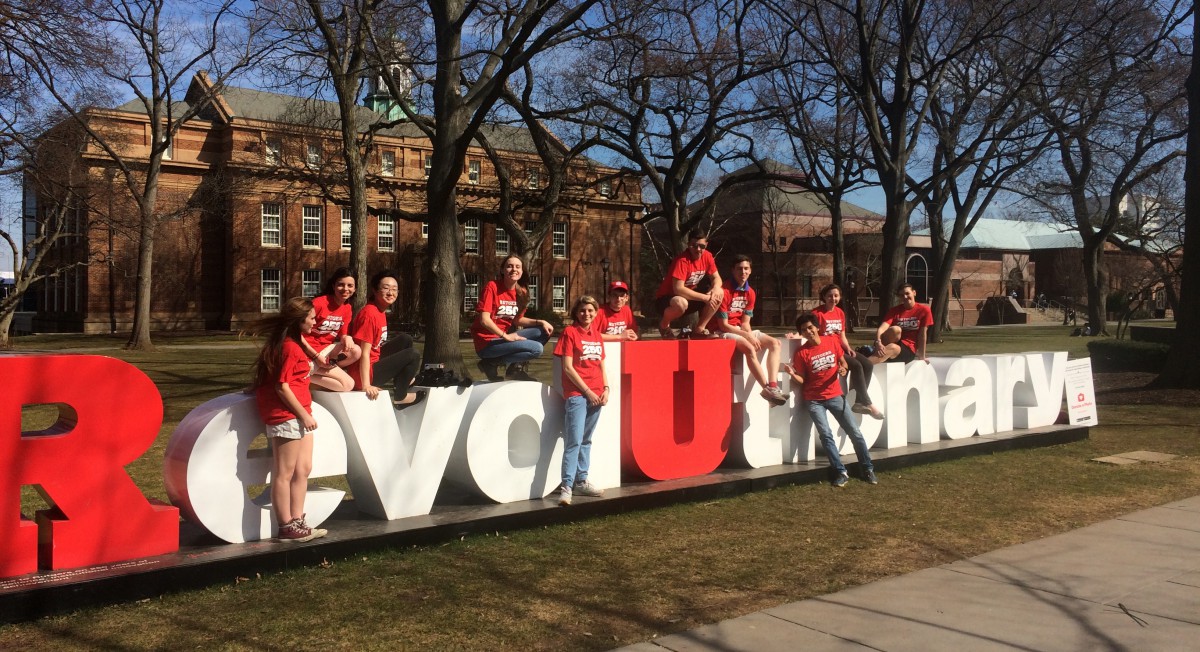
By: Sabrina Sun, Ashley Thach, Joseph Yu Section 8
The William the Silent statue is approximately 15 feet in height and is installed on a square stone base that is 6 feet in height and weighs abut 2,000 pounds. William is positioned with his right hand raised to his chest and pointing with his index finger. He holds an open scroll in his left hand. A small dog also sits at his feet on his right. He wears the clothes of a civilian magistrate of the 16th century and has a mustache and a beard.
William the Silent is located in the Voorhees mall section of Rutgers University’s College Avenue Campus in New Brunswick, New Jersey. It is located along Seminary Place, where there are several academic buildings. The statue was donated to Rutgers by Dr. Fenton B. Turck to commemorate the university’s Dutch heritage. It was collaborated with Rutgers alumnus Leonor F. Loree. The statue is William I, Prince of Orange who is the early leader of the Dutch revolt against Habsburg Spain which led to the independence of the Netherlands in 1648. For this reason, William is known as the “Father of the Fatherland”.
Our group chose this artifact because we often see it when going to classes in Scott Hall. We were interested in the history behind this statue and wanted to understand its significance in the history of Rutgers. Today, the statue is included in student life in students and community events such as graduation ceremonies, pep rallies, Dutch-American festivals and protests. Initially, students wanted to make the school color orange, in reference to the Price of Orange from Rutgers’ Dutch heritage. However, the Rutgers student publication (later named the Daily Targum), proposed the color scarlet to be the official school color. Many Rutgers students call the statue “Willie the Silent” and “Still Bill”. According the tradition, the statue is expected to whistle when a female virgin walks by.
Occasionally, the statue is a target of vandalism from the ongoing rivalry between Rutgers and Princeton University, since the first intercollegiate football game. Princeton students have frequently doused the statue with orange paint as well as other forms of vandalization.
Works Cited:
“Paths to Historic Rutgers: A Self-Guided Tour.” Rutgers University Libraries. Web. 06 Apr. 2016. <https://www.libraries.rutgers.edu/rul/libs/scua/university_archives/historic_ru_paths.shtml>
“The Silent Treatment.” Rutgers Magazine. Web. 06 Apr. 2016. <http://magazine.rutgers.edu/on-the-banks/the-silent-treatment>
“William III (of Orange).” BBC – History. BBC. Web. 06 Apr. 2016. <http://www.bbc.co.uk/history/people/william_iii_of_orange>
“William of Orange or King William II/III.” Undiscovered Scotland. Web. 06 Apr. 2016. http://www.undiscoveredscotland.co.uk/usbiography/monarchs/williamiii.html
“William the Silent of Holland.” Corvallis Today. Web. 6 Apr. 2016. http://corvallistoday.com/Europe/dutch_belgium/williamall.htm
